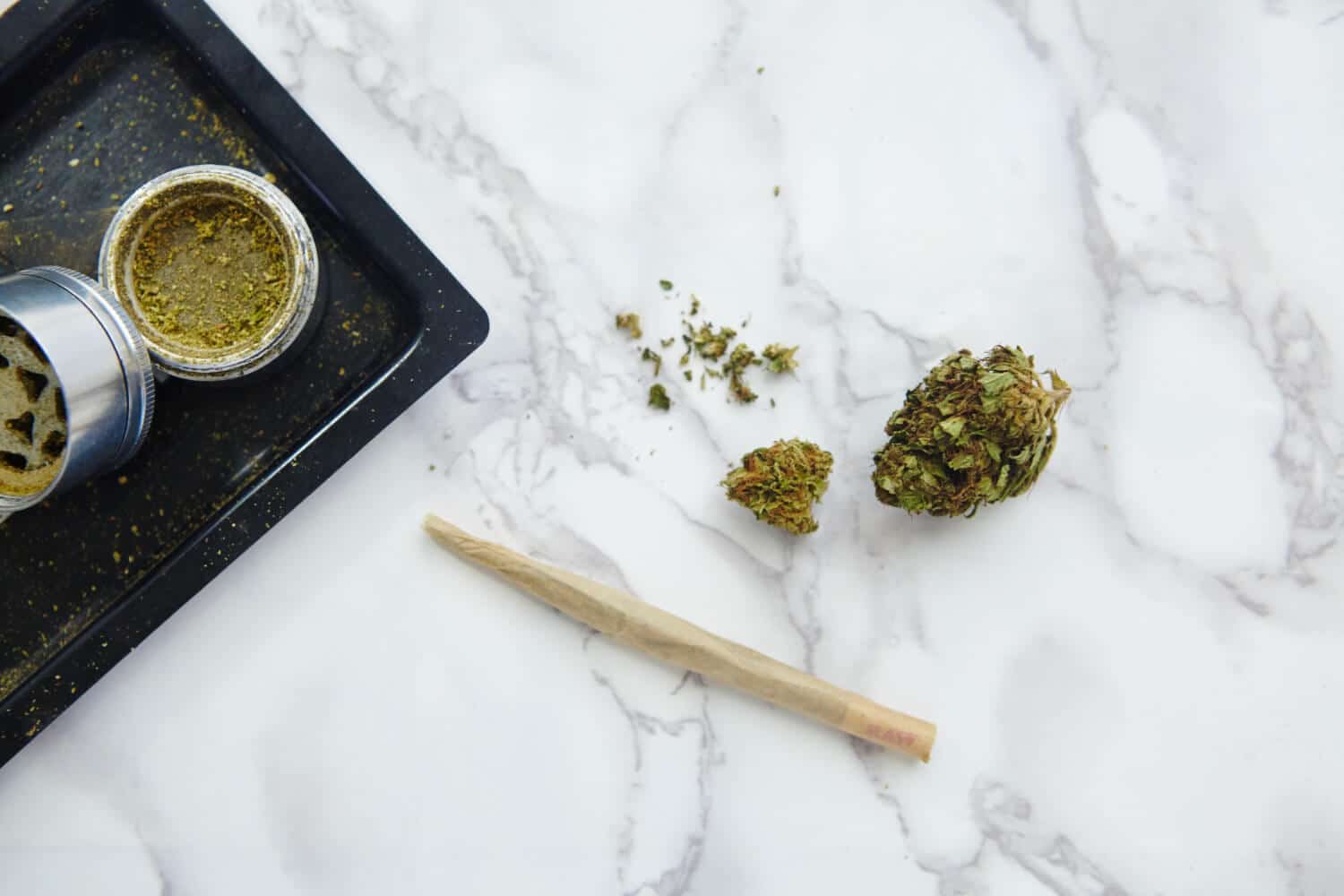Adorned with trichomes, a cannabis bud is a fragile work of art with a unique shape and structure. So, even its smallest particles (known as THCA shake) hold value when they break off during packaging, machine-rolling, or transportation. Though not identical in quality and flavor to the intact bud, shake is comparable in potency but priced lower than flower.
Technically, THCA trim and shake are both plant material mixes that are the industry’s by-products and leftovers. Both can provide the therapeutic and recreational benefits of cannabis for a fraction of the regular bud price. But what’s the difference between them, and which one is better?
THCA shake vs. trim
While the former consists of loose pieces of broken flower, the latter is whatever gets pruned during harvesting or is removed before packaging to improve the final product. Hence, there’s a wide gap in quality and potency between trim and shake, which is further complicated by what exactly makes it to the bag typically labeled as ‘Mix.’ You’ve got it right: some dispensaries and manufacturers package different types of cannabis by-products together.
That’s why anyone seeking consistent or specific effects isn’t likely to prefer mixed shake and trim to flower. But if you are on a tight budget, such products can provide a decent experience at a bargain price.
If we place these odds and ends of plant material processing and handling in their relevant categories, the names trim and shake are quite self-explanatory:
- Shake, derived from buds being shaken when moved, packaged, or picked from jars, is like the diamond dust of your precious nugs. It is nearly identical to freshly ground buds in its appearance and cannabinoid profile.
- Trim is either undesirable or excess plant material that may contain fan leaves and stems. Many growers discard it due to its low psychoactive potential. Trim is less suitable for smoking because it is harder on your respiratory system and may irritate your throat.
That said, THCA shake/trim products can boast exceptional quality, depending on their content and how they are collected or stored before and after collecting. Their major difference – and potential downside – is potency. Yet, if trim consists mainly of sugar leaves that grow around the buds and have decent amounts of trichomes and cannabinoids, it may be just as hard-hitting as premium-grade shake or exotic flower.
What are THCA shake & trim used for?
These fragmented pieces are convenient for rolling and may even need no grinding. Shake is definitely superior for smoking or vaporizing. On the contrary, mixes can be – true to their name – a mixed experience, but they are worth a try if you are in the market for a budget-friendly alternative to flower.
The versatility of THCA shake and trim can be a good thing. Even if your cat-in-a-sack purchase doesn’t live up to your expectations, you can go with it for cooking. Small cannabis pieces are a cinch to add to edibles or topicals.
The pros of purchasing THCA shake/trim
Easier on your budget
The price difference between shake or shake/trim mixes and regular ground flower or nugs is the biggest advantage of exploring this category. Such products are often offered as part of special deals and are convenient to load up on for making edibles.
Potency
While typically looked down on as lacking quality and fascinating experiences, THCA shake can hit with great force. Some varieties even contain more trichomes than buds, yielding a stronger high. You won’t get the same with trim.
Versatility
Besides traditional ways of decarbing, loose cannabis components can be cooked into a variety of recipes for homemade edibles and beverages. They can be ground and added to salads or just about any meal. Higher-quality shake can also be infused into butter or alcohol to make tinctures, topicals, and concentrates (not the case with trim).
The cons of going for THCA trim and shake
Reduced flavor and intoxicating effects
While they may contain enough THCA to get you high, shake and trim are usually gathered from a large selection of plants and stored longer than flower. Thus, such products may have lower cannabinoid levels, tend to lose potency or flavor faster than buds, and are prone to degradation when exposed to light and oxygen during the collection process.
Inconsistency
Shake rarely comes from a single strain, so its effects and potency aren’t as predictable as those of packaged buds. What’s more, the flavor profile of trim is a vague term and a result of a multitude of puzzle pieces, just like its strength. It may be fun for someone who’s into experimentation, but for many palates and tolerances, trim will not be satisfactory.
Contaminants
The mixes sold at lower price points are typically not lab-tested for contaminants and may contain dirt, dust, debris, or mold spores. These occur due to the unsuitable conditions at processing facilities.
Key takeaways: The good and the questionable
Anyone looking for a cheaper option for getting high may enjoy the shake and trim of flower offered by dispensaries. But make sure to look or ask for more information about the product for a better idea of what you’re getting in terms of THCA levels, source, safety, and potential effects.
Trim is not recommended for smoking and may be too ruthless for your throat and lungs, even when mixed up with shake. That’s why it’s better not to toss these two together. Preferably, buy and smoke shake by itself. You can also combine it with other quality cannabis products (flower or kief) for a smoother and more consistent experience.
Some suppliers will go the extra mile to create shakes of a particular strain or a well-balanced combination of strains that are just as good as the prime part of the bud. Some will lab-test their bits for potency and contaminants. But unless you stick to distinguished providers to source them from, experimenting with all options is a matter of trial and error, which is not always cost-effective.

